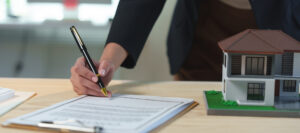
Just like in all walks of life, things can go wrong in rental properties. And on occasion, a tenant may have cause to seek compensation from their landlord, if they are personally out of pocket, if the property has fallen below the standard they are paying for, as agreed by their lease, or if they have been injured.
What happens when there is a dispute?
The Queensland Civil Administrative Tribunal (QCAT) is the body that hears dispute cases between landlords and tenants that can’t be resolved through conciliation first. These are called residential tenancy disputes and are minor civil disputes valued up to and including $25,000.
Disputes may be over things like rents, bonds, holding deposits and the standards of the premises.
According to Blink asset managers, the most common cause for compensation claims is poor maintenance.
So, who is responsible for what in a rental property?
Maintenance in general
Landlords are responsible for ensuring their investment property is fit to live in. In order to allow them to do so, tenants must notify them when repairs are required.
Repairs or maintenance required due to regular wear and tear is paid for by the landlord, while tenants must pay for damage caused by themselves or their guests. This is a simple way of looking at it but there are always shades of grey.
Inside the property
Mould can be a health hazard and it is often subject to disagreement over who is responsible. This generally depends on how it got there in the first place.
If it is caused by a problem with the property, such as a leaking roof, poor ventilation, structural issues and so on, it’s a landlord’s responsibility. But if a tenant’s actions cause the mould, say by not cleaning properly, the tenant is responsible for any damage and cleaning.
Other things to consider inside a rental property could be light bulbs, which may require special maintenance if they are specialised models, and smoke alarms, which will come under updated legislation as of January 2022.
Smoke alarms must be kept up to date and compliant by landlords and the risk of injury or even death is possible if they are not working properly.
Outside the property
Drainpipes and gutters, which can be blocked; lawns, gardens and trees, which should be maintained as specified on a rental agreement; and swimming pools, which require day to day maintenance and cleaning from tenants, but safety compliance and long term maintenance by landlords, are examples of external property features which can sometimes be the cause of residential tenancy disputes.
Safety issues
The other factor in compensation claims is often to do with safety or injury.
Tenants in Qld who are injured in a property they rent through no fault of their own may be entitled to compensation.
Landlords have a duty of care to ensure the property is safe, by ensuring building safety standards are met, regular checks are carried out by experts and qualified tradespeople carry out necessary repairs.
If this hasn’t happened and an injury is caused as a result, a tenant may be justified in claiming compensation.
How disputes are resolved
If a dispute is defined as non-urgent, perhaps a dispute about a rental bond, breach of a conciliation agreement or general dispute between parties, the Residential Tenancies Authority (RTA) suggests first trying to resolve the dispute directly with the other party through a phone call, meeting or by writing a letter.
If that is not an option the RTA can use conciliation to try to find an agreement that suits all parties.
If that still doesn’t work, the RTA will provide a ‘Notice of unresolved dispute’, and parties can apply to QCAT to resolve the dispute.
Disputes defined as urgent can go directly to QCAT. These are more serious disputes including terminations of rental tenancies over things like repeated breaches, excessive hardship, objectionable behaviour, abandoned premises and damage or injury.
Applicants can find information on how to apply to QCAT, plus online forms and application checklists at www.qld.gov.au/law/housing-and-neighbours/renting-and-owning-property/resolving-residential-tenancy-disputes.
Contact The Blink Property Team
Related posts


Safeguarding Your Investment


